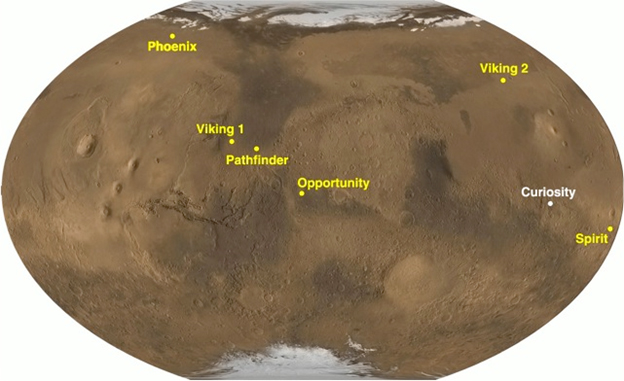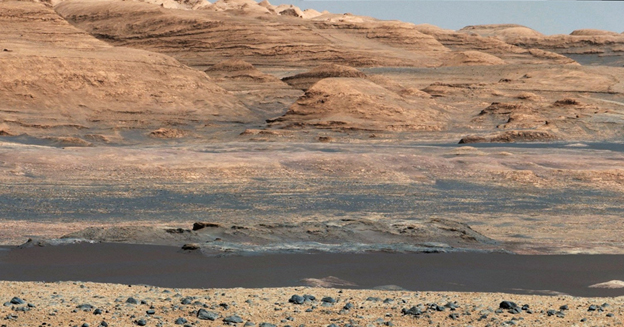The Curiosity Rover at Gale Crater
The Curiosity Rover at Gale Crater
The Curiosity Rover
at Gale Crater
The Mars Science Laboratory rover Curiosity launched from Cape Canaveral, Florida on
November 26, 2011 and landed in Gale crater on August 6, 2012. Gale crater is ~150 km
wide and is located near the equator, along the boundary between the ancient "Southern
Highlands" of Mars and the younger "Northern Lowlands." At the center of the crater is
a ~5 km high mountain of layered sedimentary rocks known as Mount Sharp, and these rocks
contain minerals that are key to understanding ancient environments and climate change
on Mars.
 Past and Present Missions to Mars: Location of the Gale Crater (Curiosity)
with respect to other landed missions. Credit: NASA/JPL-Caltech.
Past and Present Missions to Mars: Location of the Gale Crater (Curiosity)
with respect to other landed missions. Credit: NASA/JPL-Caltech.
The lowest layers of rock contain clay minerals, which, on Earth, generally form in
environments with abundant liquid water. The rocks above the clay-bearing units contain
sulfate minerals, which require less water to form and precipitate from saline, and
potentially acidic, solutions. This stratigraphy of minerals, with sulfate-bearing
rocks on top of (and thus younger than) clay-bearing rocks, is common across Mars,
and marks a major climatic change more than 3 billion years ago.
Curiosity is gradually driving up the flanks of Mount Sharp and studying the rocks
and sediments with cameras and instruments that can help scientists identify minerals,
determine chemical compositions, and search for the presence of organic molecules. With
this information, scientists will interpret the ancient environments of Mars and search
for evidence that these environments may have been habitable.
 Welcome to the Gale Crater: Image of the lower layered rocks of Mount Sharp
taken by the Mastcam instrument on Curiosity. Credit: NASA/JPL-Caltech/MSSS.
Welcome to the Gale Crater: Image of the lower layered rocks of Mount Sharp
taken by the Mastcam instrument on Curiosity. Credit: NASA/JPL-Caltech/MSSS.